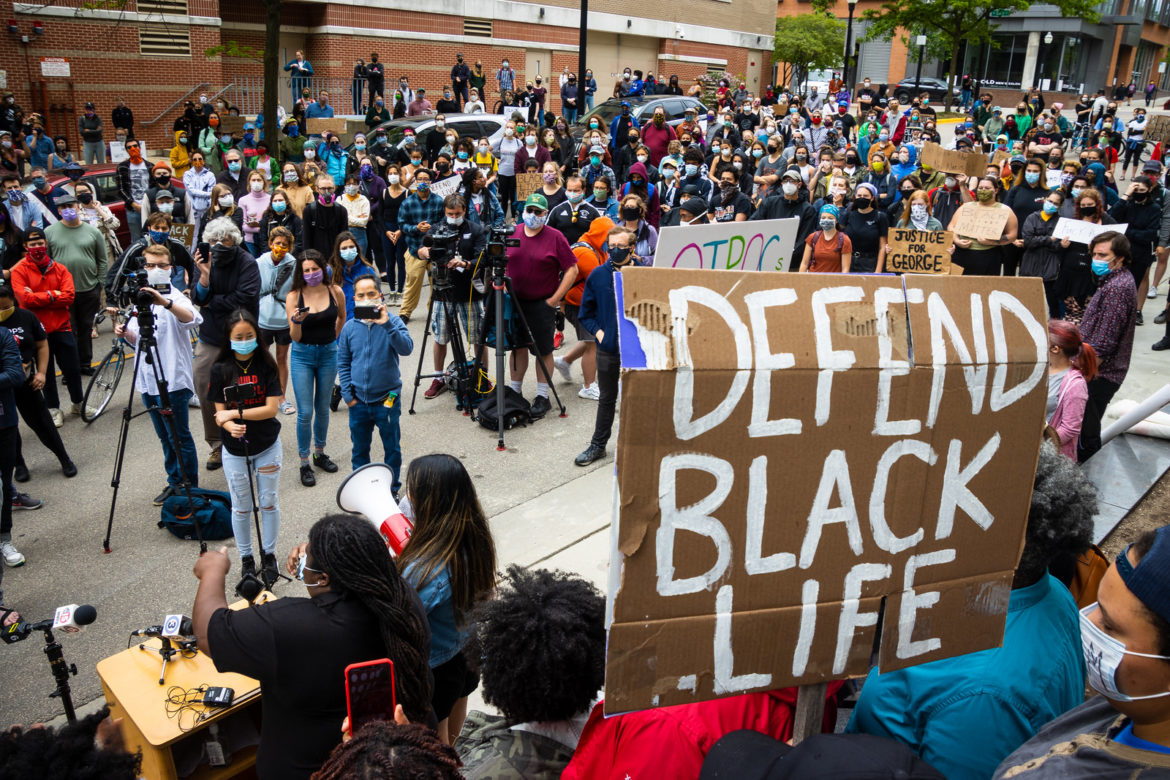Can U.S. Prisons Stop Using Solitary Confinement?
Some states have reduced solitary, and a new bill offering federal incentives to others that follow suit is before Congress, but long-term change will only happen when authorities are willing to rethink “prison culture,” a webinar was told Wednesday.

Efforts to eliminate or even just reduce the use of solitary confinement are complicated by prison staffing shortages, by lingering fears over the spread of COVID, and by a prison “culture” focused on punishment and control, a webinar was told Wednesday.
“As a country we have viewed prison as a place of punishment for a very, very long time, and flowing from that has been the use of solitary confinement to control bad behavior and to control violence,” said Dean Williams, executive director of the Colorado Department of Corrections.
Colorado is among the small number of states that have effectively moved away from solitary confinement or, as it is sometimes called, administrative segregation. But Williams said he and other prison chiefs were facing post-pandemic staff shortages and systemic barriers that narrowed their ability to make more fundamental changes.

Dean Williams, executive director Colorado Department of Corrections
“We have reduced solitary confinement to nearly zero, but there are [caveats],” he said at the opening of a two-day webinar for journalists.
The webinar, entitled ‘Solitary Confinement: Unfinished Business,” was organized by the Center on Media, Crime and Justice at John Jay College, publisher of The Crime Report, with the support of the Jacob & Valeria Langeloth Foundation.
“I am not the only director who wants to eliminate or reduce solitary confinement, [or who] has developed important initiatives,” Williams said. “But there are long historical pressures around the use of solitary confinement that a person in my job has to be aware of.”
The Discipline Problem
Those pressures include fears by staff of being unable to effectively discipline unruly prisoners who pose a threat to themselves or others, Williams said.
They also include newer political developments, such as rising political opposition to any justice reforms, fanned by concerns about new threats to public safety. Resistance to change is exacerbated as well by concerns about the impact of COVID on U.S. prisons and jails.
Many corrections departments have used solitary as a way of preventing the disease from spreading. At the height of the pandemic, up to 300,000 incarcerated individuals were being held in administrative segregation—a 500 percent increase over previous years.
Nevertheless, bipartisan efforts to change solitary policies have not slowed down, Rep. David Trone (D-MD) told the panel.
“We’re getting a little bit of traction in certain parts of the other party, even though the atmosphere (in Congress) is so toxic,” said Trone, who presented a bill in June to create a commission to set guidelines for reducing the use of solitary.
The bill, called the Solitary Confinement Study and Reform Act, will also establish financial incentives for states who provide additional mental health services for justice-involved individuals.
“We’ve got to make a change, or shame on us,” said Trone, who noted he had secured key support from Republican colleagues in Arizona and Oklahoma for the measures.,
“Study after study has shown over a course of a year 20 percent of people incarcerated in our state and federal prisons, put in solitary confinement at some point, confined to a [cell] smaller than a parking space,” Trone said.
He added that studies also demonstrate that the recidivism rate for individuals who experienced solitary confinement increases by an additional 15 percent the high recidivism rates–estimated at more than 50 percent for the formerly incarcerated.
But the fight to eliminate solitary has also become a stalking horse for opponent of justice reform who blame softer approaches advocated by reformers for a surge in violent crimes—even though the evidence for that is unclear
In New York City Wednesday, the arguments erupted at a city council hearing called to discuss a bill which would ban the practice in city jails.
The bill was opposed by New York corrections union chief Benny Boscio Jr.
“What do we do with the inmates that continue to cut, stab, slash, sexually assault and brutally assault our officers and other inmates? Nobody’s been able to answer that question,” said Boscio, head of the Correction Officers’ Benevolent Association.
Opponents have received backing from NYC Mayor Eric Adams, who is under pressure to deliver on promises of public safety.
But at Wednesday’s webinar speakers claimed that despite fears of hardliners, there was growing bipartisan support for reexamining solitary.

Tammie Gregg, ACLU
“I’m not saying the states are perfect, but they’ve made significant advancements–California has a bill that’s pending. We’ll know something by Friday if it’s going to pass, but it will have significant ramifications,” said Tammie Gregg, deputy director the American Civil Liberties Prison Project and leader of ACLU’s Stop Solitary campaign.
Anti-solitary campaigners have received support from conservative groups like Right on Crime.
“We’ve proposed what is basically an inspector-general style administrative reform in the prisons where you would have somebody monitoring and assessing the individuals who are in solitary confinement,” Zoe Tylor, Kentucky State Director of Right on Crime, told the webinar.
“I think the most effective way to make change is, to be frank, not in the legislature. It’s with state departments of correction, and on a federal level, with the Bureau of Prisons. Who knows the prison better than the people who run the prisons, right?”
But even incremental changes would face heated opposition, warned Robert Saleem Holbrook, executive director of the Abolitionist Law Center.
‘A Convenient Tool’
“We have to recognize that prison administrators and prison regimes just look at solitary as a convenient tool. And unfortunately, prisons, like police, are being called upon to deal with larger issues, social issues that are, for lack of a better word above their pay grade,” said Holbrook, who spent seven years in solitary in a Pennsylvania prison as a youth.
“In prison, solitary confinement is most often used for people who are having mental health disorder who have mental health disabilities,” he added. “In Pennsylvania, 80 percent of the people who are in solitary confinement, are there for refusing to obey an order, [or rule violations like] getting on the phone when they weren’t supposed to be.
“I think, like maybe less than 10 percent are there for actual violence, right, hurting someone harming someone.”
Williams and other speakers acknowledged, however, that only a fundamental transformation of U.S. prison system would lead to eliminating the use of solitary.
“The humanization, or what the Norwegians called the normalization, of prisons, is probably one of the most important dynamic changes in terms of changing prison culture and in reducing solitary confinement,” said Williams.
In Colorado, Williams has notably instituted major changes in parts of Colorado’s prison system that included allowing some incarcerated individuals to wear street clothes and permitting prisoners to produce podcasts.
The panelists agreed that solitary was necessary in certain circumstances—particularly with violent or mentally unstable prisoners
But for most incarcerated individuals who violate prison rules, “there are so many alternatives to solitary confinement,” said Gregg.
“We advocate that, to the extent solitary confinement is necessary, it should be for hours, not for days or weeks or months for years, and it should be [structured] to be able to give officials the opportunity to deescalate, whatever threat is going on.
“To the extent that longer term solitary needs to be used, there are professionals who should be making those assessments about how long you should be in solitary confinement.”
The conference continued Thursday.
This summary was prepared by TCR Editor Stephen Handelman

 Landwebs
Landwebs 























